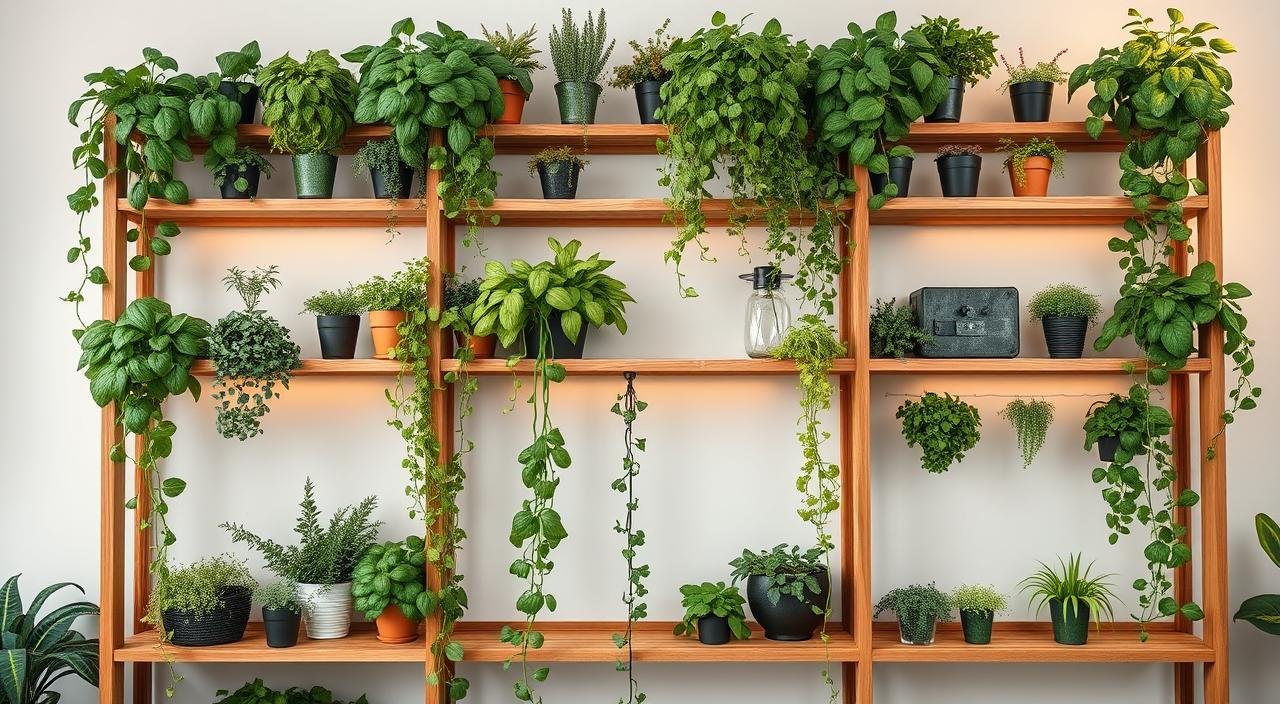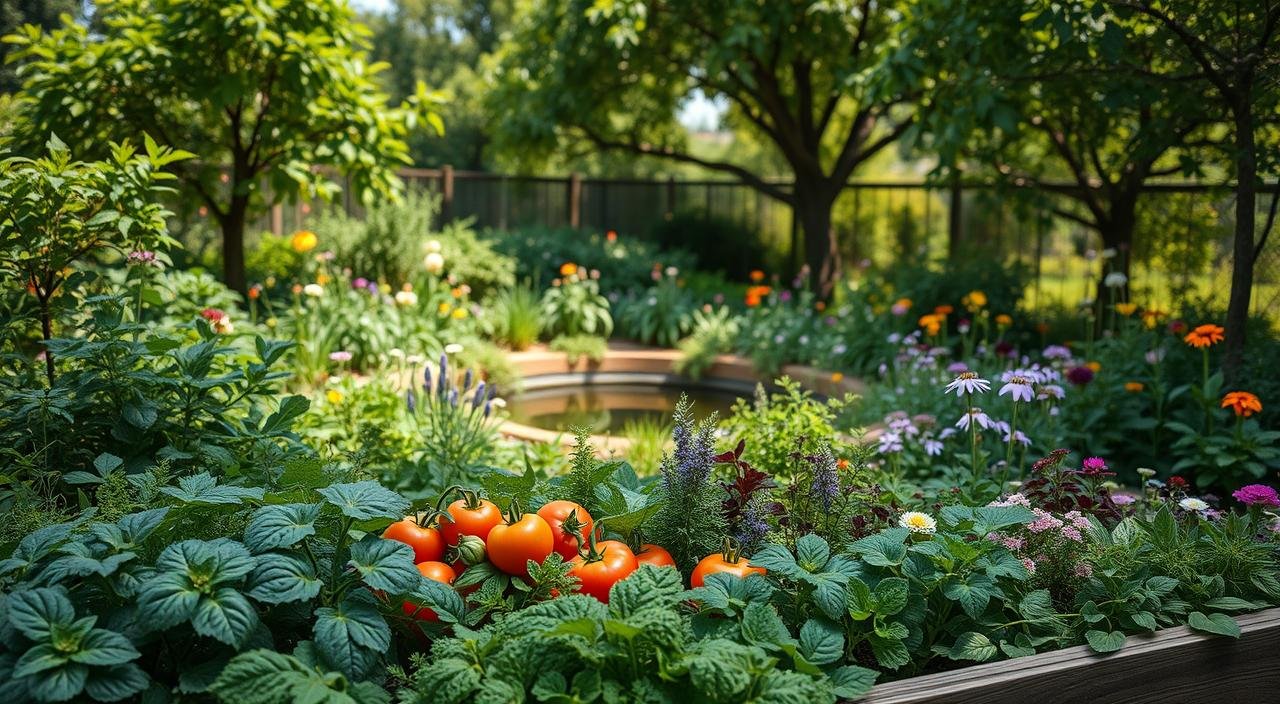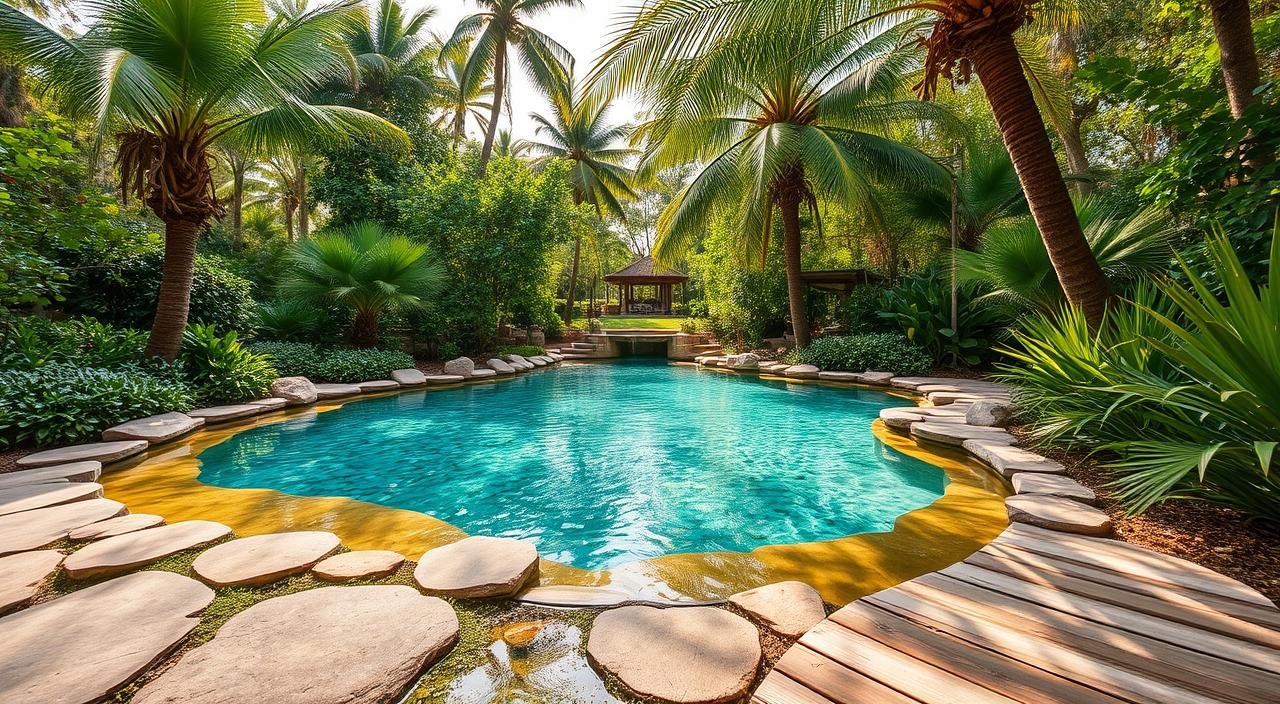Multilevel Gardens Designs to Elevate Your Outdoor Space
Ever thought of turning your ordinary backyard into a stunning oasis? Multilevel gardens might be the perfect solution. These designs not only boost your garden’s look but also make the most of your yard’s space. By creating tiered landscapes, you can achieve a striking visual effect while improving functionality. Let’s dive into how multilevel gardens can transform your outdoor area into a masterpiece!
Key Takeaways: terraced gardens
- Multilevel gardens can maximize your outdoor space effectively.
- These designs enhance the visual appeal of any yard.
- Building tiers can improve functionality and organization in landscaping.
- Multilevel gardens offer opportunities for creative planting and aesthetics.
- Transforming your outdoor area can greatly increase your home’s value.
- Engaging with nature through design encourages relaxation and enjoyment.
Understanding Multilevel Gardens
Multilevel gardens transform your outdoor area by using the natural contours of the landscape. These gardens, often called terraced landscapes, offer a dynamic approach to planting and design. They feature varied elevations for unique planting schemes. Imagine vibrant flowers cascading down or vegetables thriving in raised beds.
This layered aesthetic not only boosts visual appeal but also adds depth to your outdoor space. In essence, multilevel gardens encompass various styles, from formal terracing to casual, flowing designs. They invite creativity, allowing you to incorporate different materials and plant types.
You can experiment with textures and colors while maintaining overall harmony. Multilevel gardens encourage exploration and serve as a stunning backdrop for outdoor gatherings.
When planning your multilevel garden, consider both aesthetic and functional purposes for each level. Bring your vision to life by adding paths, seating areas, or small water features. These elements enhance the sensory experience. Whether you aim for a peaceful retreat or a vibrant space for entertaining, multilevel gardens offer endless possibilities.
Benefits of Choosing Multilevel Garden Designs
Multilevel garden designs are a game-changer for space efficiency and beauty. They turn your outdoor space into a stunning work of art. By using every inch of land, these designs bring plants and features together in perfect harmony. This section delves into how these layouts not only save space but also elevate your garden’s beauty.
Maximizing Space Utilization
With a multilevel garden, you can turn unused areas into lively spots. Whether your yard is sloping or flat, these designs fit right in. You can set up different zones for various plants, from vibrant flowers to edible veggies. This ensures every bit of space is used wisely.
Consider using raised beds or terracing to make the most of your space. This approach keeps your garden charming without sacrificing functionality.
Improving Aesthetic Appeal
Multilevel gardens offer breathtaking beauty. They add visual interest and depth with their clever use of height. The mix of colors and textures from different levels creates a sophisticated look. Visitors will be wowed by the captivating views and engaging paths your garden offers.
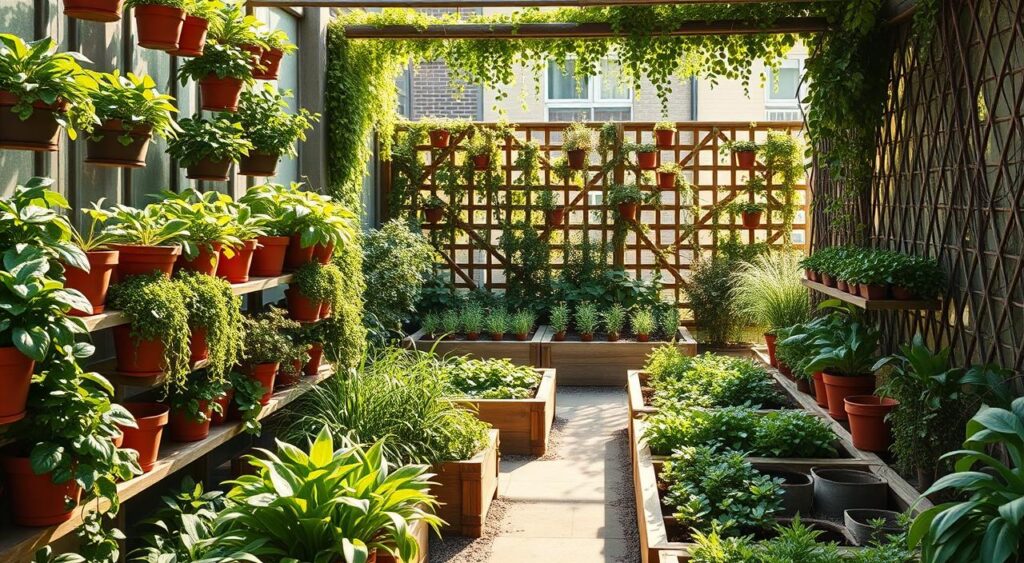
Types of Multilevel Gardens
Exploring the different types of multilevel gardens opens up exciting possibilities for your outdoor space. Each type brings its own set of benefits, boosting both the utility and beauty of your garden. From terraced gardens suited for sloped landscapes to the sophistication of raised garden beds, let’s explore the unique qualities of each.
Terraced Gardens
Terraced gardens are perfect for hilly or sloped terrains. They create flat areas, preventing soil erosion and maximizing space. This design makes gardening easier and allows for a variety of plants at different heights, adding visual interest and diversity.
Raised Garden Beds
Raised garden beds offer a stylish way to grow vegetables and flowers, improving drainage and soil quality. They provide easy access, allowing you to garden without bending. This type of garden is customizable and can be creatively integrated into your landscape design.
Multi-Tiered Planters
Multi-tiered planters showcase vertical gardening. They use vertical space to grow a variety of plants, from herbs to flowers, in a small area. These planters can be arranged in various shapes and sizes, adding an artistic touch to your garden while promoting creativity and functionality.
Designing Your Multilevel Garden
Designing a multilevel garden unleashes a multitude of possibilities. With careful garden design, you can craft a space that’s both practical and visually captivating. Begin by envisioning the essence of your garden. Will it be a serene oasis or a lively gathering spot?
Then, dive into multilevel planning. Use your land’s natural features to establish different levels. Each tier can have its own function, like a cozy seating area, a vegetable garden, or a vibrant flower bed. This approach not only optimizes your yard but also improves the garden’s overall design flow.
When designing your garden, remember the significance of landscaping aesthetics. The right color schemes and plant choices are key to a unified look. Select plants with diverse heights, textures, and hues to guide the viewer’s gaze across the garden. Aim for balance, ensuring your garden is a reflection of your creative vision.
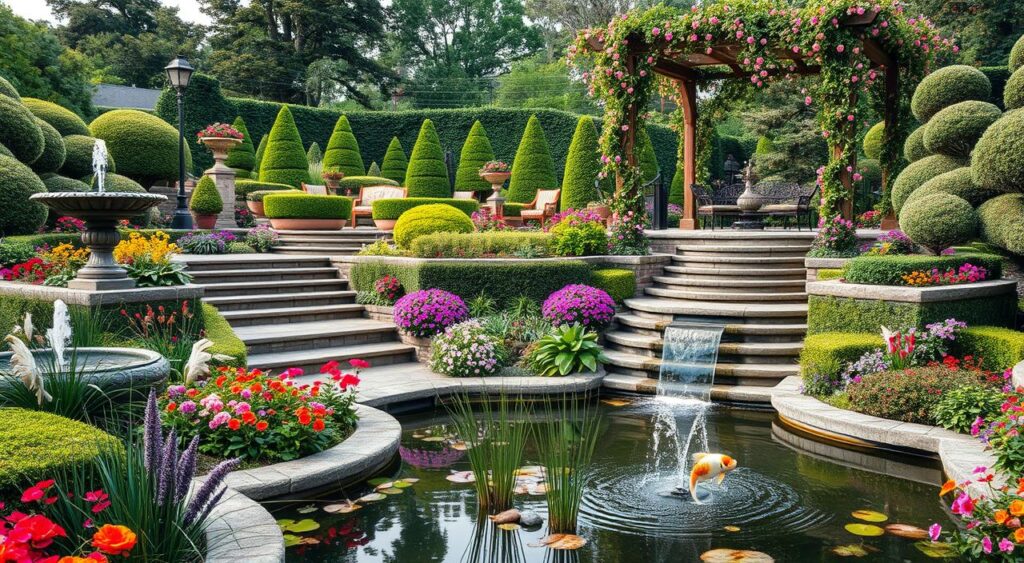
Incorporating Landscaped Tiers
Creating a stunning multilevel garden goes beyond stacking planters or terraces. It demands a thoughtful approach to your property’s landscape. By embracing the natural contours through contour gardening, you can achieve beautifully landscaped tiers. These not only enhance your outdoor space’s beauty but also its functionality. Good drainage management is key to the garden’s success.
Using Natural Contours
Designing your garden with the terrain in mind maximizes your land’s unique features. Using natural slopes allows for visually appealing landscaped tiers, reducing the need for extensive excavation. The elevation changes add interest and drama, making your garden a focal point. They also provide areas for different plants, each suited to their ideal sun and moisture conditions.
Effectively Managing Drainage
With landscaped tiers, effective drainage management is essential. Proper water flow between levels protects plants from waterlogging and promotes healthy root growth. Consider using French drains or strategically placing plantings to absorb excess water. This approach sustains your plants and maintains your garden’s integrity.
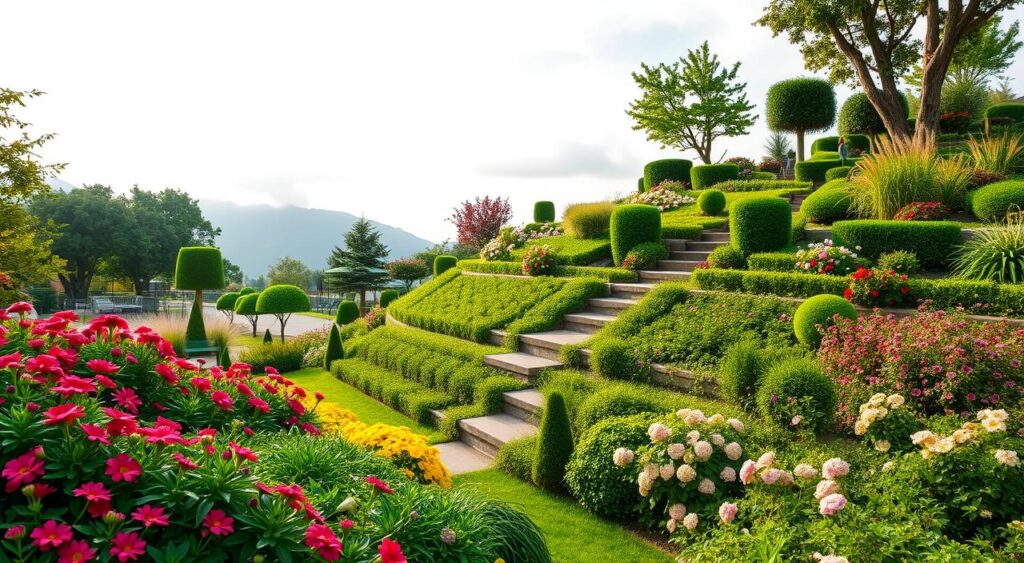
| Aspect | Benefits | Considerations |
|---|---|---|
| Utilizing Natural Contours | Leverage existing terrain for aesthetic appeal | Assess local soil conditions |
| Drainage Management | Prevents water accumulation and plant stress | Plan for seasonal rain patterns |
Elevated Garden Beds: A Creative Approach
Elevated garden beds are a thrilling way to upgrade your outdoor area, making gardening accessible. These innovative solutions not only lift your plants but also add texture and height to your landscape. The joy of nurturing vibrant flowers and fresh vegetables is now without the back strain!
When planning your elevated garden beds, explore various shapes and sizes. Rectangular beds are ideal for traditional vegetable gardening. Circular or tiered designs, on the other hand, can add a unique touch to your backyard. Select materials that match your landscape, like wood, stone, or recycled options for an eco-conscious choice.
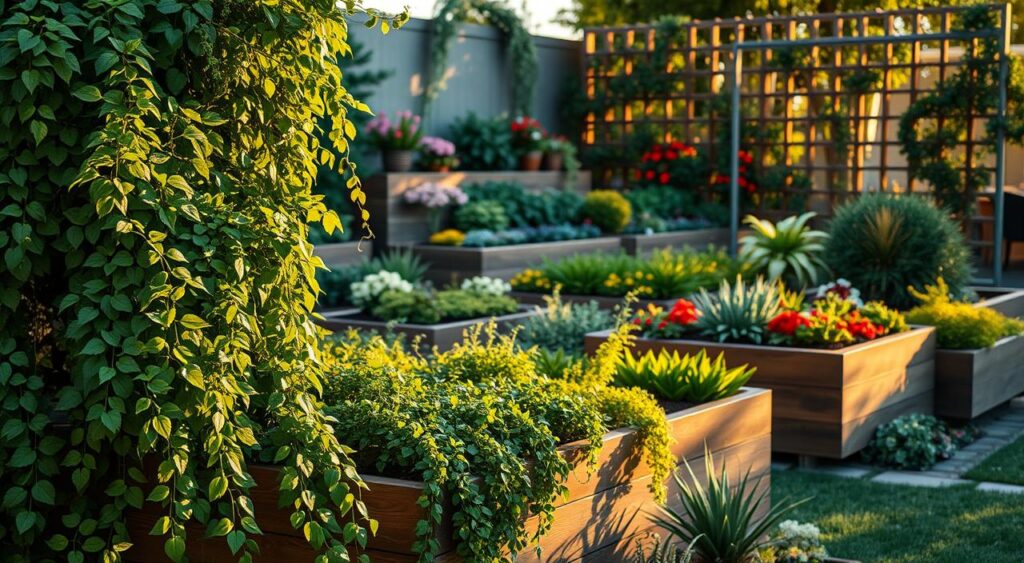
Maximize your elevated garden beds by adding features like trellises for vertical growth or built-in seating for relaxation. Personalizing your beds can turn them into a masterpiece. The more creative you are, the more your garden will mirror your personality and style!
| Material | Benefits | Considerations |
|---|---|---|
| Wood | Natural appearance, easy to work with | Can rot over time, requires treatment |
| Metal | Durable and modern look | Can overheat plants in hot climates |
| Stone | Sturdy and long-lasting | More difficult to install, heavier |
Elevated garden beds open up a world of fun in gardening. Let your imagination run wild as you design a space that brings happiness and productivity to your outdoor space!
Tiered Garden Design Elements
Designing a multilevel garden requires careful material and layout choices. The right materials can transform your design, while pathways ensure smooth access and flow. Let’s explore how to improve these elements for a space that’s both functional and visually stunning.
Choosing the Right Materials
When picking garden materials, focus on options that enhance your plants’ natural beauty. They should also be durable and easy to maintain. Here are some top picks:
- Wood: Offers warmth and natural charm, great for raised beds and walls.
- Stone: Provides timeless beauty, ideal for terraces and steps.
- Pavers: Versatile for stylish walkways and patios that fit your tiered design.
Choosing these materials wisely boosts your garden’s look and function. It creates a space that feels welcoming and connected to nature.
Incorporating Pathways
Pathways are key for navigating and accessing your garden. Consider these tips for placing your pathways:
- Flow: Design paths that naturally guide visitors through your garden, linking tiers.
- Width: Make sure paths are wide enough for people and maintenance tools.
- Materials: Use consistent materials for pathways to keep the look cohesive.
Adding well-designed pathways to your tiered garden improves both its use and enjoyment. It turns your outdoor area into a more inviting space.
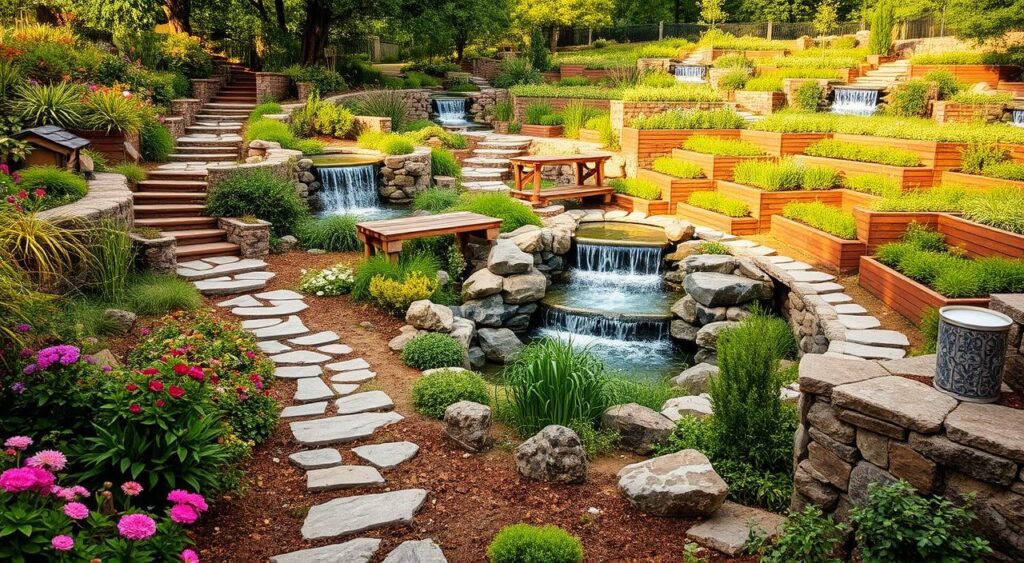
Multi-Level Landscaping for Functionality
Designing outdoor spaces that are both beautiful and functional is a rewarding challenge. Multi-level landscaping is an exceptional way to create outdoor ‘rooms’ for family and friends. These areas can be for gathering, dining, or simply enjoying nature. The goal is to break up large expanses into inviting areas, transforming your yard into places filled with charm and comfort.
Creating Outdoor ‘Rooms’
Outdoor rooms are the heart of modern landscape design. By using varying elevations, you can create distinct areas for different activities. For instance, a raised deck can be a dining area, while a sunken patio can be a cozy nook away from the hustle and bustle. Thoughtful integration is key to maximizing space. Each area should flow seamlessly into the next, making your landscape a cohesive retreat.
Integrating Seating Areas
Seating in gardens should be both functional and aesthetically pleasing. Choose materials that complement your landscaping, like natural wood or stone. Arranging seating around fire pits or water features enhances relaxation, encouraging you to spend more time outside. By carefully selecting and positioning seating options, you can create inviting spaces that beckon relaxation and connection.
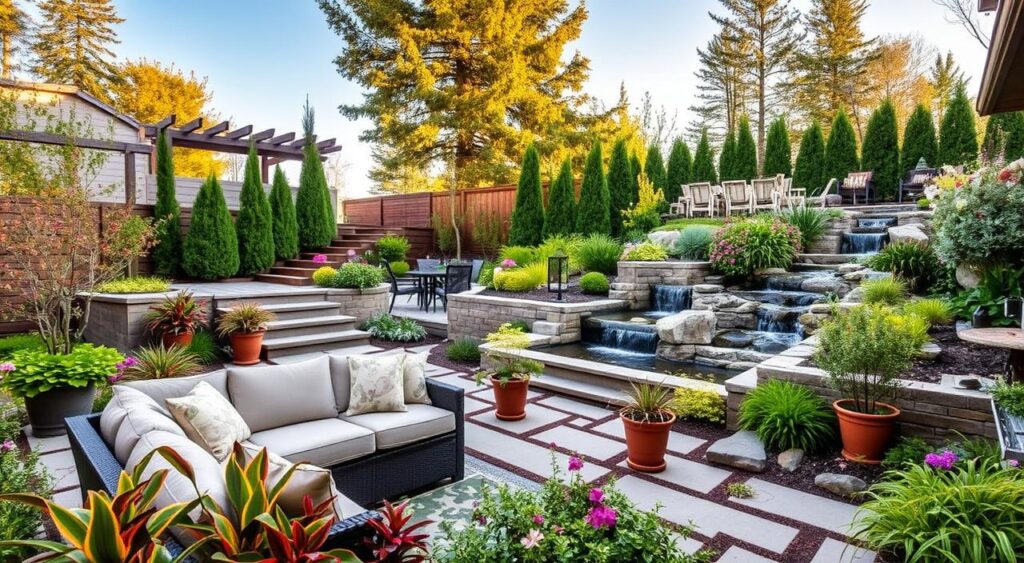
Examples of Stunning Multi-Level Garden Projects
Are you ready to explore some breathtaking examples of multilevel gardens? These inspirations showcase a variety of designs that beautifully combine functionality and aesthetic appeal. Each project highlights unique elements—creating spaces that you can easily adapt for your backyard!
One standout project features a terraced garden that flows seamlessly down a slope. This design utilizes stone walls that not only support plant life but also add a rustic touch. Incorporating native plants enhances the garden’s natural beauty while promoting local wildlife. It serves as one of the finest garden project ideas that allows for a vibrant micro-ecosystem right in your backyard.
Take a look at a cozy outdoor seating area tucked within landscaped tiers. This design not only creates distinct zones for relaxation but grows blooming plants all around for an inviting atmosphere. Perfect for entertaining guests or just enjoying a quiet morning with coffee, this idea takes social spaces to a new level.
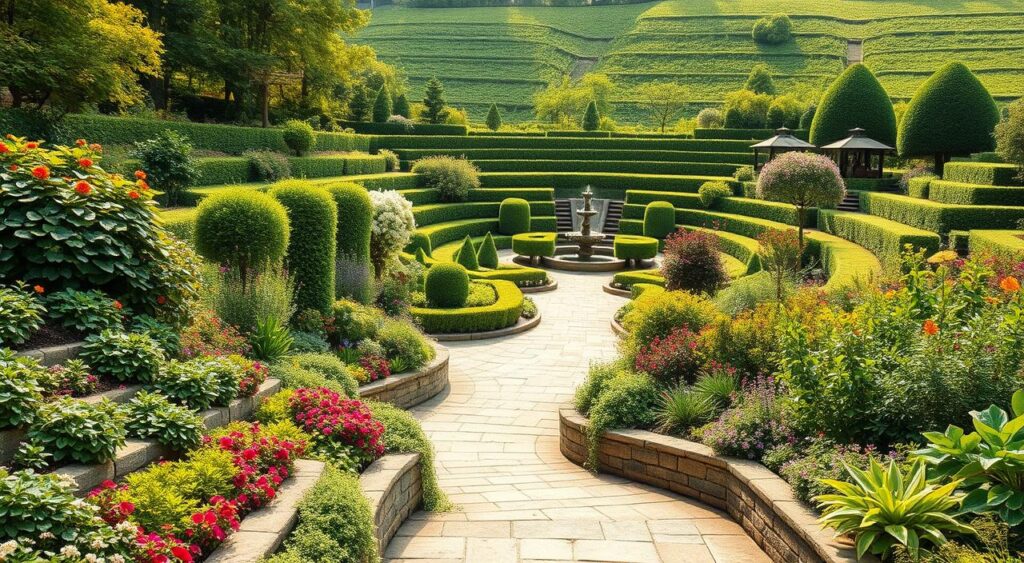
| Project Type | Key Features | Benefits |
|---|---|---|
| Terraced Garden | Stone walls, native plants | Promotes wildlife, enhances aesthetics |
| Multi-Tiered Planters | Vertical space utilization, adjustable heights | Great for small areas, diverse plants |
| Landscaped Seating Areas | Outdoor seating, blooming plants | Inviting atmosphere, defined spaces |
Inspiration can strike from any corner of the garden—it all depends on how you envision the final product. Multilevel garden designs open up a realm of possibilities, helping you create a space that feels personal and inviting! What ideas will you incorporate into your own project?
Tips for Building Your Own Multilevel Gardens
Ready to roll up your sleeves? Building your own multilevel gardens is a rewarding adventure filled with creativity and nature. A well-thought-out approach can make a significant difference in your final design. Here are some essential building tips for layout planning and garden maintenance that will keep your outdoor oasis flourishing.
Planning Your Layout
Start by sketching your garden layout. Consider factors like sun exposure, soil type, and drainage. Divide different areas for plants based on their growth needs and aesthetic appeal. Use terracing or steps to create distinct yet functional spaces. Don’t hesitate to explore various heights to add visual interest. This layout planning step is critical for a balanced and thriving garden.
Maintenance Considerations
Once your garden is set up, ongoing garden maintenance becomes key. Regularly check for weeds and pests, ensuring that plants remain healthy. Mulching can help retain moisture and suppress weeds. Create a routine for watering, pruning, and feeding your plants. By committing to consistent maintenance, you will enjoy a vibrant multilevel garden for years to come.
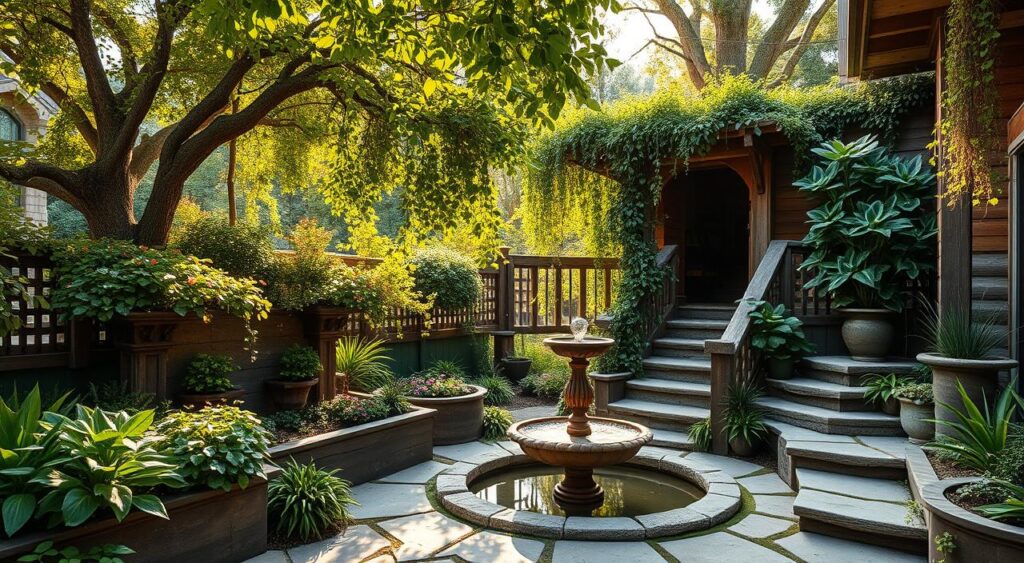
Cost Considerations for Multi-Level Gardens
Investing in your outdoor space is thrilling, but it’s vital to grasp the garden costs involved for a successful project. A multilevel garden can transform your home, adding both beauty and functionality. It’s critical to plan your budget carefully.
Materials will be a major expense. Opt for budget-friendly landscaping items like recycled timber, local stones, and affordable plants. These choices can cut costs without sacrificing looks. Also, comparing prices from various suppliers can lead to better deals.
Labor costs are also significant. A DIY approach can save on wages, but assess your skills first. Professional help ensures quality but may raise your overall garden investment. Seeking multiple quotes helps find a service that fits your budget without sacrificing quality.
Here’s a breakdown of possible expenses:
| Expense Type | Estimated Cost |
|---|---|
| Materials | $500 – $3000 |
| Labor (DIY) | $0 |
| Labor (Professional) | $1000 – $5000 |
| Maintenance Costs (Annual) | $200 – $800 |
Understanding these costs allows for a realistic budget for a stunning, multilevel garden. Proper planning and research ensure a rewarding garden investment that boosts your lifestyle and property value.
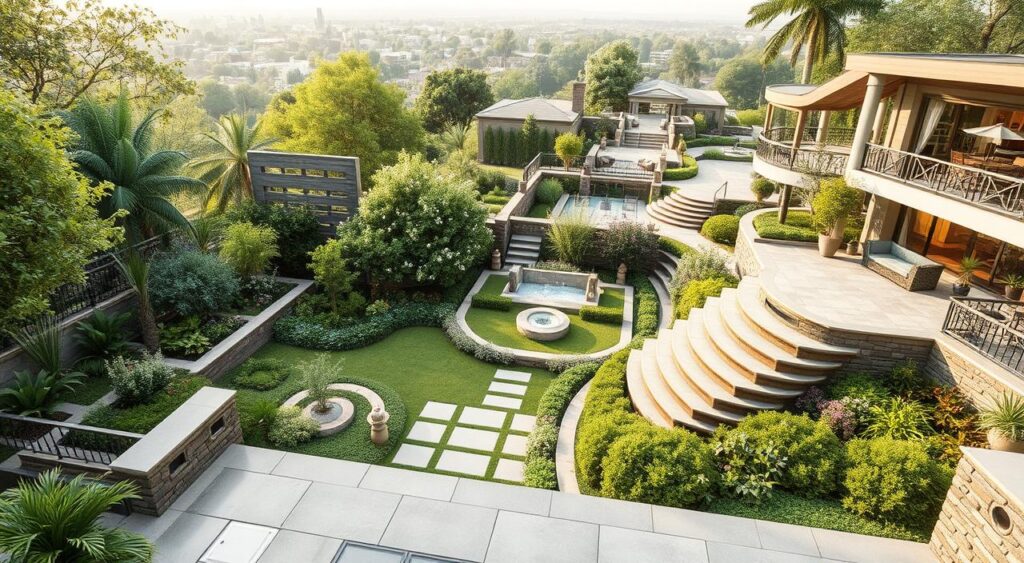
Working with Landscaping Professionals
Designing a multilevel garden can seem overwhelming. Collaborating with landscaping professionals can alleviate this stress. They bring their expertise and creativity to life, making your dream garden a reality. It’s vital to clearly communicate your desires to designers, ensuring they grasp your style and preferences.
Begin by researching local landscaping professionals. Check out reviews and testimonials to assess their skills. Narrow down your options and schedule consultations to discuss your design ideas. This ensures you find someone who aligns with your vision and has the necessary expertise.
Seeking advice from landscaping professionals is incredibly beneficial. They might suggest innovative features like lighting or specific plants to enhance your garden’s beauty. Their expertise also ensures your garden is functional, addressing drainage and maintenance needs.

Collaboration is at the heart of working with designers. Your input is essential, but professionals bring it to life. Embracing this partnership leads to a garden that showcases your style while being practical and well-designed.
Maintaining Your Multilevel Garden
Maintaining a multilevel garden requires dedication and a keen eye for detail. As seasons shift, so do the needs of your plants. To keep your outdoor space lively and healthy, seasonal care is key. Here are some vital tips for garden upkeep tailored for multilevel gardens.
Seasonal Care Tips
- Spring: Begin with a deep clean. Clear out debris and dead leaves. Add new plants, spacing them for optimal growth.
- Summer: Monitor watering closely. Different levels may have different moisture levels. Check soil regularly and adjust watering as needed. Fertilizing now can boost growth.
- Fall: It’s the best time for pruning. Trim back perennials and remove annuals that have finished blooming. This prepares your garden for winter and keeps its shape.
- Winter: Protect plants from extreme cold. Mulching keeps roots warm and soil moist. Watch for ice and snow, which can damage delicate plants.
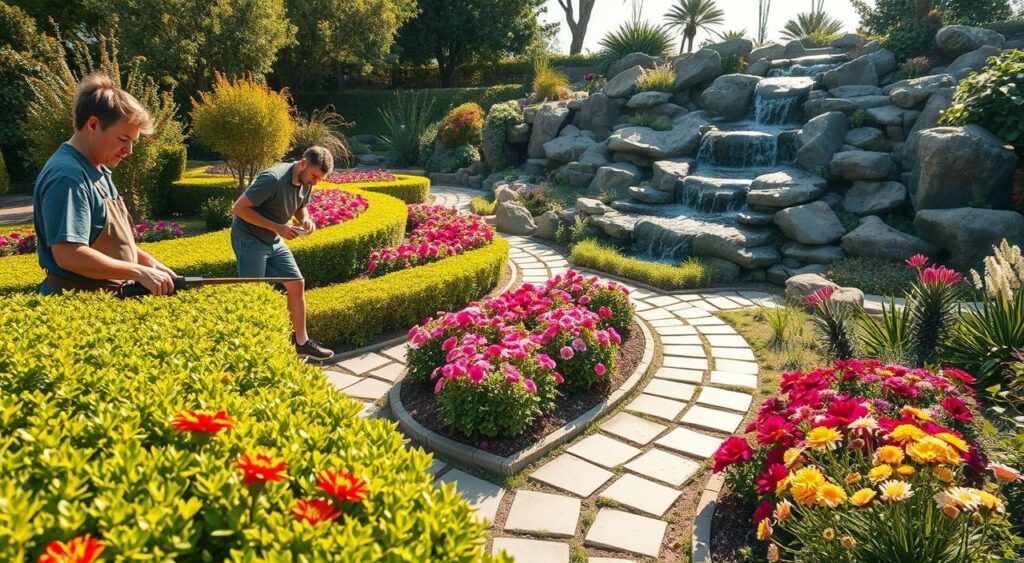
Inspiration for Your Multilevel Garden
Ready to transform your outdoor space into a stunning haven? I’ve gathered a wealth of garden inspiration to spark your creativity! Imagine vibrant color schemes blending with unique plant selections tailored to your local climate. Picture cozy seating areas nestled among lush greenery, perfect for relaxation or entertaining guests.
Let’s take a look at some fantastic design ideas:
- Utilize vertical gardening techniques to maximize space and create a striking visual impact. Think of cascading flowers spilling over from tiered planters.
- Incorporate native plants that thrive in your area. These selections not only enhance your garden’s aesthetic but also support local wildlife.
- Experiment with different textures by combining smooth stones, wooden elements, and soft foliage. This variety adds depth and interest to your creative landscaping.
- Define your garden’s sections with contrasting materials—like combining brick pathways with gravel to guide visitors through your yard.
Visualizing your multilevel garden can be thrilling. Whether you envision lush greenery or colorful flowers, letting your imagination flow will lead you to a personal masterpiece. Embrace the opportunity to create a space that reflects your personality and style!
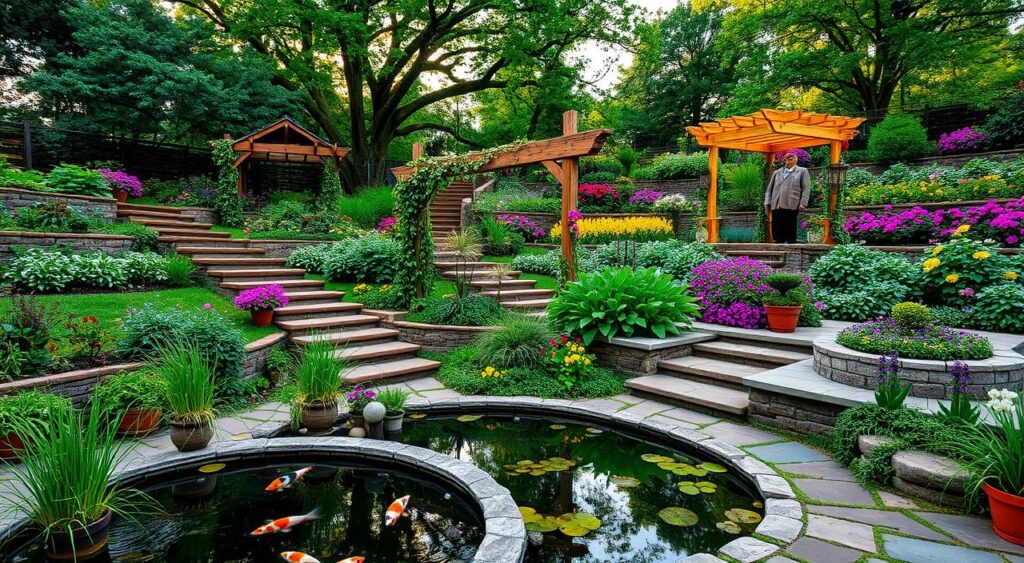
| Design Element | Ideas | Benefits |
|---|---|---|
| Color Schemes | Bright blooms, contrasting foliage | Enhances visual appeal and creates focal points |
| Plant Selections | Mix of perennials, shrubs, and ornamental grasses | Ensures year-round interest and biodiversity |
| Seating Areas | Benches, hammocks, or outdoor furniture | Encourages relaxation and outdoor enjoyment |
| Pathways | Stone walks, gravel trails | Guides guests and enhances navigability |
Let these garden inspirations fuel your passion for creative landscaping. With some effort and thought, you can cultivate a beautiful multilevel garden that you and your loved ones will cherish for years to come!
Conclusion
Our journey through the multilevel garden transformation reveals a unique chance to boost your outdoor beauty. By adding different levels, you not only add depth but also make your space more functional. This blend of beauty and utility can completely change how you experience your garden.
Embarking on this project, whether alone or with experts, can be very fulfilling. It’s not just about planting; it’s about creating a space that reflects your style and meets your needs.
As you ponder these final thoughts, remember that your dream garden is just a step away. Seize the opportunities and let your imagination run wild—your multilevel garden is waiting for you!
FAQ
What are multilevel gardens?
How do multilevel gardens improve space utilization?
What types of multilevel gardens are there?
How can I design my own multilevel garden?
What materials are best for tiered garden elements?
How do I manage drainage in a multilevel garden?
What are elevated garden beds, and what benefits do they offer?
How do I create distinctive outdoor ‘rooms’ in my multilevel garden?
What should I consider regarding the costs of a multilevel garden?
How can I maintain my multilevel garden?
Where can I find inspiration for my multilevel garden design?

AUTHOR: MARIA JOSE VENTRAMELI
Specialist in Home Design, Architecture, and Trends
With years of experience writing for top home and lifestyle blogs, she now contributes to 17Vibes, offering practical, research-backed insights on renovations, smart technology, sustainable building, and modern living trends. Join our Facebook community here


